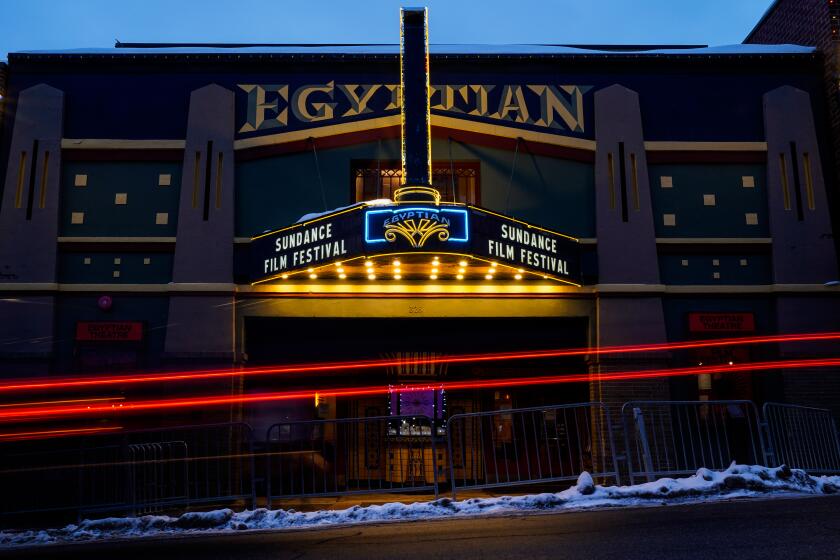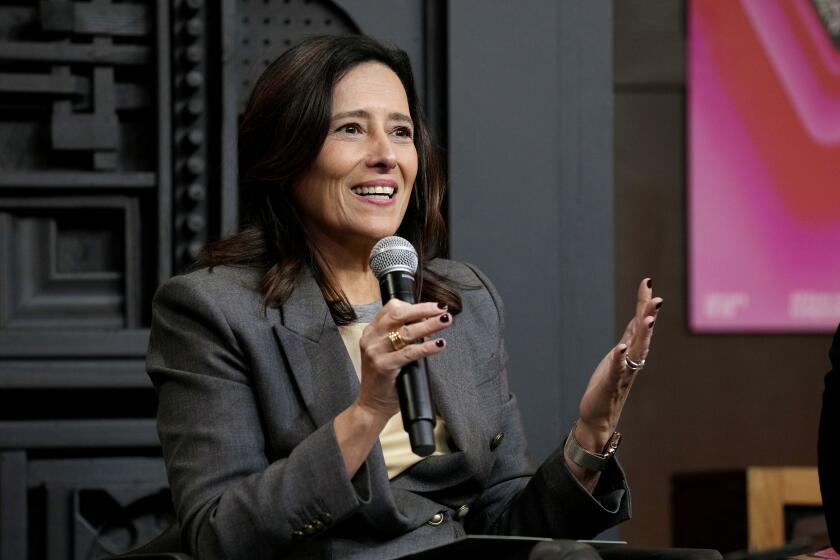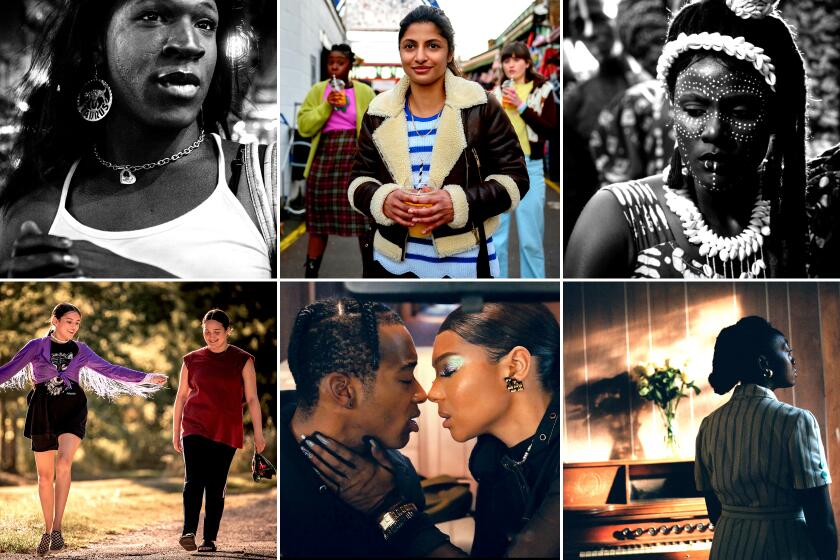Review: ‘Mass’ powerfully explores the emotional aftermath of a school shooting
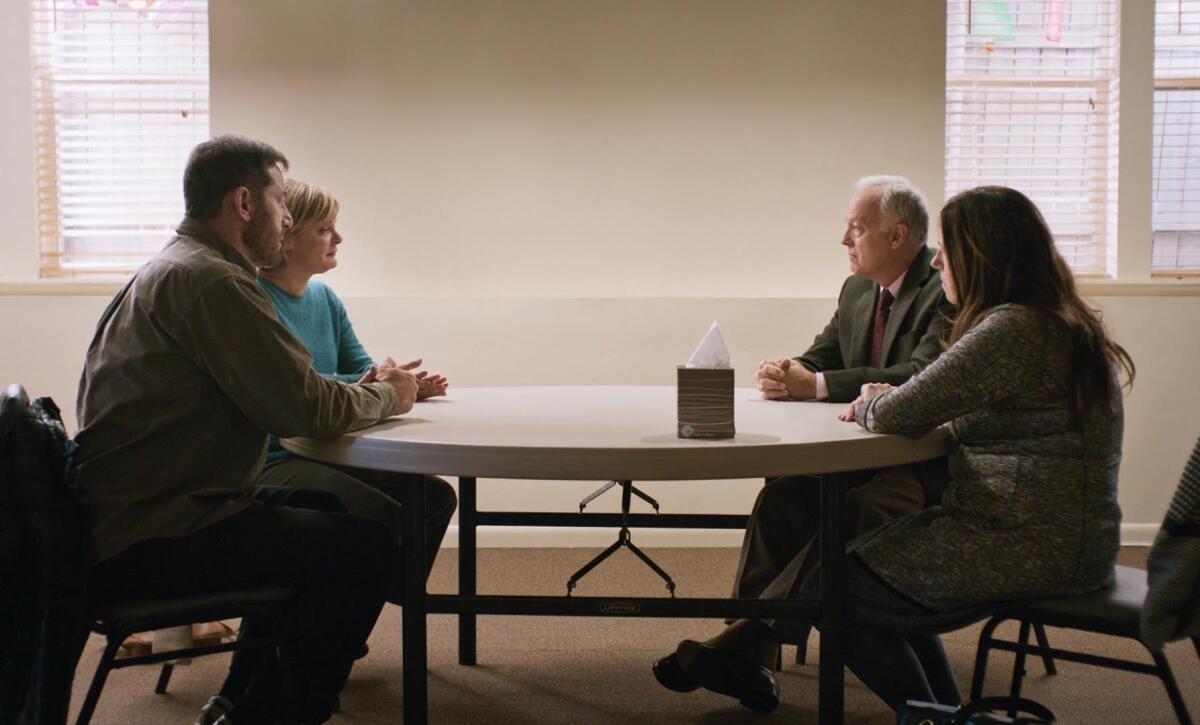
- Share via
The Times is committed to reviewing theatrical film releases during the COVID-19 pandemic. Because moviegoing carries risks during this time, we remind readers to follow health and safety guidelines as outlined by the Centers for Disease Control and Prevention and local health officials.
“Mass,” Fran Kranz’s somber, stirring writing-directing debut, unfolds over roughly two hours at a small-town church where two middle-aged couples gather for a private and intensely painful reckoning. The movie’s title evokes a religious service; not coincidentally, it also brings to mind a term that has been a depressing fixture of American headlines for decades (and surfaced again just this past week). Several years earlier, we learn, these characters’ lives were shattered by a mass shooting at their children’s high school. Jay (Jason Isaacs) and Gail (Martha Plimpton) lost their son; Richard (Reed Birney) and Linda (Ann Dowd) also lost theirs, though as he was the shooter in question, they fear he was lost to them long before.
Or was he? The question of how a child becomes what he becomes — in this case, someone who murdered several other teenagers and then turned the gun on himself — hangs heavily over this movie’s tense silences, hard questions and anguished tears. So does the implicit accusation that Richard and Linda could have done something to stop him if only they’d been more attentive, proactive parents. Speculations about cause and questions of responsibility are always quick to materialize in the immediate aftermath of any real-life shooting; they also tend to haunt the movies made about them, including those, like Gus Van Sant’s “Elephant” and Denis Villeneuve’s “Polytechnique,” that dramatize their tragedies, moment by harrowing moment.
“Mass” has something different in mind, and not just because it takes place long after an eruption of violence that we are forced to imagine rather than witness. Kranz, a longtime actor making a startlingly assured shift into feature filmmaking, appears to have little interest in the tidy assignment of blame, though myriad possible causes — bad parents, school bullies, violent video games, easily accessible firearms — are summarily raised in passing. What fascinates the director, and clearly also fascinates his four outstanding lead actors, is the possibility of grace in a seemingly impossible, inconsolable situation. With considerable intelligence and disarming moral seriousness, they confront the question of whether forgiveness and understanding can be honestly extended or received, and whether healing can ever be more than an abstract concept.
Abstract concepts, of course, are the natural concern of every place of worship. So are a lot of basic practical logistics, and “Mass” takes care to ground its emotionally fraught story in the banality of the everyday. Shot primarily at Emmanuel Episcopal Church in Hailey, Idaho, the movie begins with a flurry of preparations in a back room: Chairs are set up, food is laid out and a tissue box is placed unobtrusively on a nearby table. A hard-working parishioner, Judy (Breeda Wool), is anxious to show her guests warmth and hospitality, but Kendra (Michelle N. Carter), the no-nonsense parents’ representative who arranged the meeting, makes clear that all they need is quiet and privacy. This literal setting of the scene creates a heightened level of anticipation and intimacy that kicks up a notch once the parents arrive.
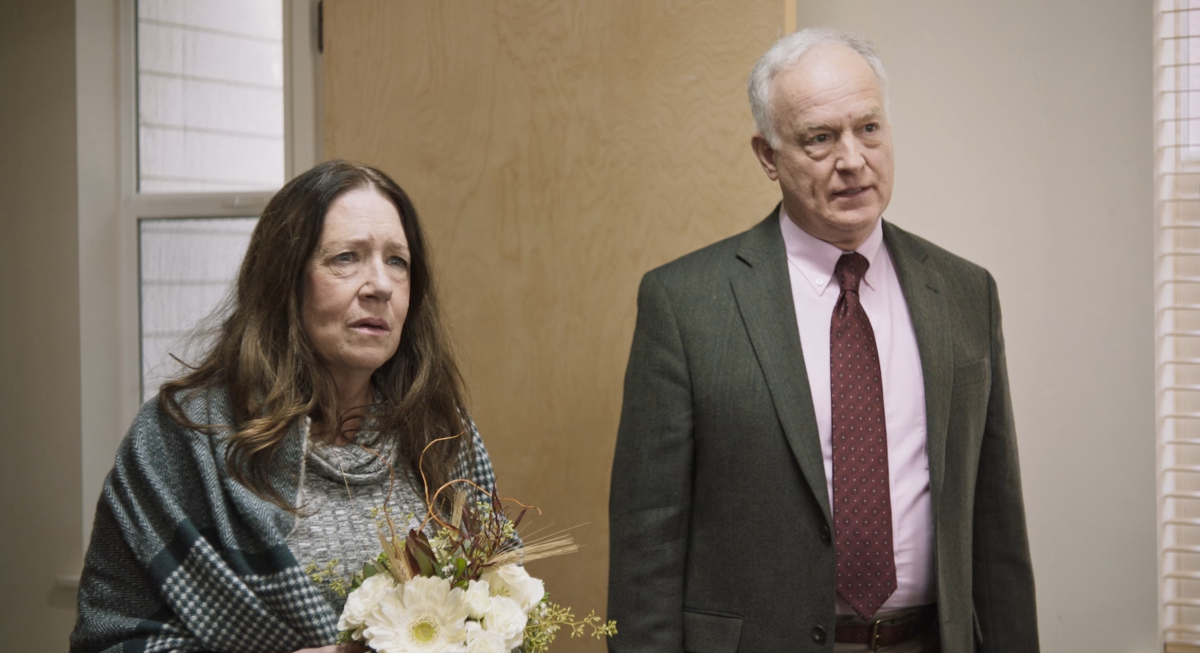
The four of them are left alone, but the camera stays with them, watching as they exchange hesitant greetings, share a few family mementoes and stumble their way into the anything-but-casual business at hand. All four choose their words carefully, perhaps too carefully; it’s hard to recall the last time you saw characters struggling so intently not to say the wrong thing in a situation where there is no hope of saying the right thing. We’re left to infer a lot of unexplained history: their painful past correspondence; cycles of legal complications and media frenzies; the end of Richard and Linda’s marriage. We also sense their reluctance to talk about something that they’ve spent years talking about and living with, that has become the very air they breathe.
From time to time the characters, slipping into the spare confines of Lindsey Moran’s production design and bathed in the soft, uncloying glow of Ryan Jackson-Healy’s images, seem to evoke real-life parents who’ve tried to turn tragedy into activism. That’s a word that Jay, an outspoken gun-control advocate, personally can’t stand, and Isaacs’ handsome but haggard face conveys the exhaustion of someone too accustomed to taking care of others at the expense of himself. You sense his protectiveness toward (and fear of) Gail, who’s initially the quietest of the four but seems to direct the conversation with her silences, her every glare and gesture charged with resentment in Plimpton’s lacerating performance.
Until Gail reaches her breaking point and the floodgates open, her reluctance to speak feels like a pointed rebuke to Linda, whose own emotions gush forth with comparative ease. Her instinctive empathy can be both heartrending and mildly annoying in a movie that invites you to adopt each character’s perspective in turn (an intention signaled by the precise, democratic rhythms of Yang-Hua Hu’s editing). But those perspectives themselves change over the course of the story, and Dowd, a virtuoso at turning on the waterworks, also knows precisely when to turn them off. By the end it’s her Linda who seems to speak most soberly and authoritatively for all of them, and who seems to have come the closest to moral clarity that any of them can.
At one point Linda echoes a line from the memoir of Sue Klebold, mother of the Columbine High School shooter Dylan Klebold, when she both critiques and defends her moral right to grieve, describing the undiminished depths of her love for the killer she raised. Richard stubbornly shares that love, even as his more defensive posture — he’s analytical and businesslike to a fault, and a little smug — threatens to thwart the viewer’s compassion. But if he’s the least overtly sympathetic of the four, the one the script relies on most heavily to nudge the drama toward conflict, Birney nonetheless strips him just as emotionally bare, revealing his detachment as its own private tragedy.
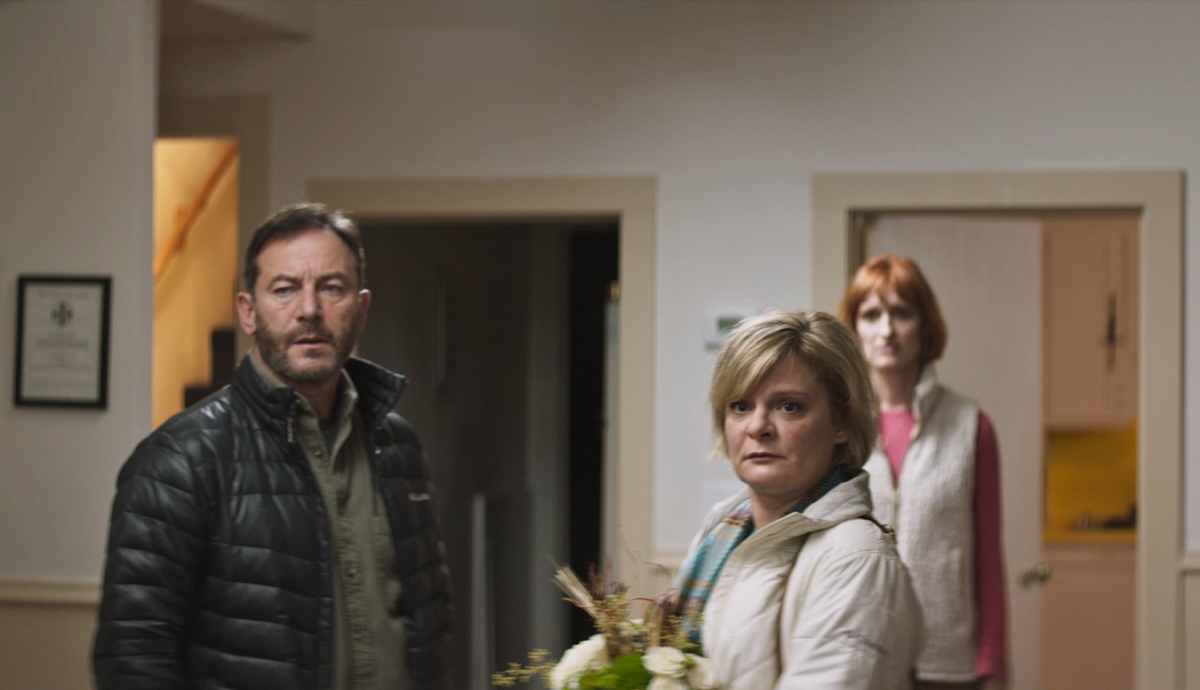
The balance of clashing perspectives and contradictory emotions is so finely calibrated throughout “Mass” as to stir your admiration and your suspicion alike. Kranz’s multitasking script must explore inner lives and parcel out narrative details, often in the same instance. The difficulty of that task becomes most evident when it comes time for the characters to verbally reconstruct the events of the shooting — an agonizing conversation whose power is dissipated, not heightened, by the suddenly agitated movements of the camera and a too-studied shift in aspect ratios. In these moments the movie seems to be trying to force an emotional reaction, to lurch for a catharsis that its characters know is desperately out of reach.
“Mass” is at its strongest when it shares in that knowledge, and when it calls into question the ritualistic gestures toward forgiveness and healing that Jay and Gail are moved to consider. They know words can comfort and soothe, no less than the hymn they hear a choir practicing in the distance. But this is, among other things, a vividly eloquent movie about the futility of language, its inability to represent the full scope of our intentions and experiences, much less exorcise our deepest pains.
At one moment Richard says, “You think you can attach one word to something to understand it, to make you feel safe.” There is some comfort to be gleaned within the cloistered silences of “Mass,” but also an implacable sorrow for four people — and the countless grieving women and men they represent — who will never know safety again.
‘Mass’
Rated: PG-13, for thematic content and brief strong language
Running time: 1 hour, 50 minutes
Playing: Starts Oct. 8 at AMC Sunset 5, West Hollywood, and the Landmark, West Los Angeles
More to Read
Only good movies
Get the Indie Focus newsletter, Mark Olsen's weekly guide to the world of cinema.
You may occasionally receive promotional content from the Los Angeles Times.




